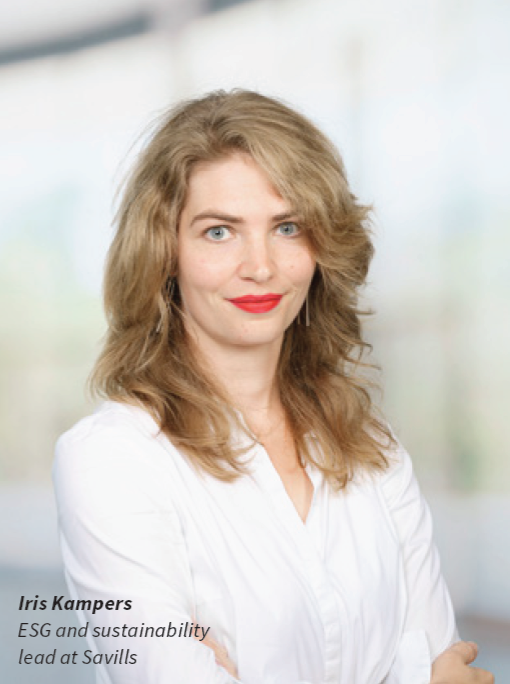MEASURING SOCIAL VALUE
In Europe, emphasis within ESG and sustainability is placed upon the environmental side of things. This is mainly driven by accountability: it is easier to quantify energy consumption, water usage and emissions than it is to quantify an increase in wellbeing.
Social value is the value people place on the changes they experience in their lives. In our context, this means the positive impact Savills has on society, the planet, and specifically the communities that are affected by our presence. If Savills advises a landlord to add communal space to their office scheme, this has social value. But how do we measure that? Are numbers available at all? And if we can measure an increase in happiness across the local community, does that translate into financial value? Can the developer of the building somehow be rewarded for this increase in value?

In the capitalist system we are in, value is determined by supply and demand. If something has limited supply and is in high demand, its value increases. However, for a very long period of time the limited supplies of our planet were treated as if they were unlimited, and thus costs remained low. It did not help that the planet does not present bills itself: resources were auctioned off for the price of the land. This is now changing, and therefore we see an increase in value of ecosystem services: whether they be building materials or pollination by bees. We are slowly incorporating the environmental side of sustainable conduct in our business models.
Then there is the societal value of our endeavours. A green environment means cleaner air, which means better health for the community, resulting in less sick days and thus happier lives and less productivity loss. On paper, it makes sense. Research is showing the causality here. Integrating biophilic design in an office can save you approximately €2.000 per employee per year due to reduced absenteeism and greater productivity, for example.
Particularly in impact investing, the idea that the social side of ESG has value is widely shared. Or at least the idea that value of a socially conscious building is more stable. A hospital will be in demand for a long time to come, whereas the pandemic has shown that office buildings are more dynamic in their demand. Which is why people are willing to rethink the business case of real estate and spread their return on investment over a longer period of time, in return for a more stable income.

Still, this approach relies on the classic capitalist system of value creation to determine whether it is worthwhile to incorporate sustainable measures. This is where people look towards regulation to create incentive: if you should incorporate social measures by law, that takes out the need to calculate the business case.
However, looking beyond compliance, it seems there is a third option that remains relatively unexplored. As mentioned above, a healthy planet provides ecosystem services. These ecosystem services supply everything humans depend on for a good quality of life: shelter, food, clean air, water, even recreation and aesthetic value. Therefore, if these are available in abundance, we can assume people can live healthy, happy lives, right?
At Savills, we aim to incorporate integral sustainability solutions to save our clients costs, add to the environmental health of a place and create social value. The classic win-win – but with an extra win. This requires a radically different mindset and new business models to incorporate the relatively high cost of strategy creation. Yet, there are plenty of examples of brands that have successfully – and profitably – made this change and use their business as a force for good. Think of consumer brands like Patagonia, whose founder recently even transferred the ownership of Patagonia, valued at about $3 billion, to a specially designed trust and a non-profit organization created to preserve the company’s independence and ensure that all of its profits — some $100 million a year — are used to combat climate change and protect undeveloped land around the globe. Just imagine the impact if the real estate sector, the world’s biggest store of wealth, would be able to make this disruptive business model change.
